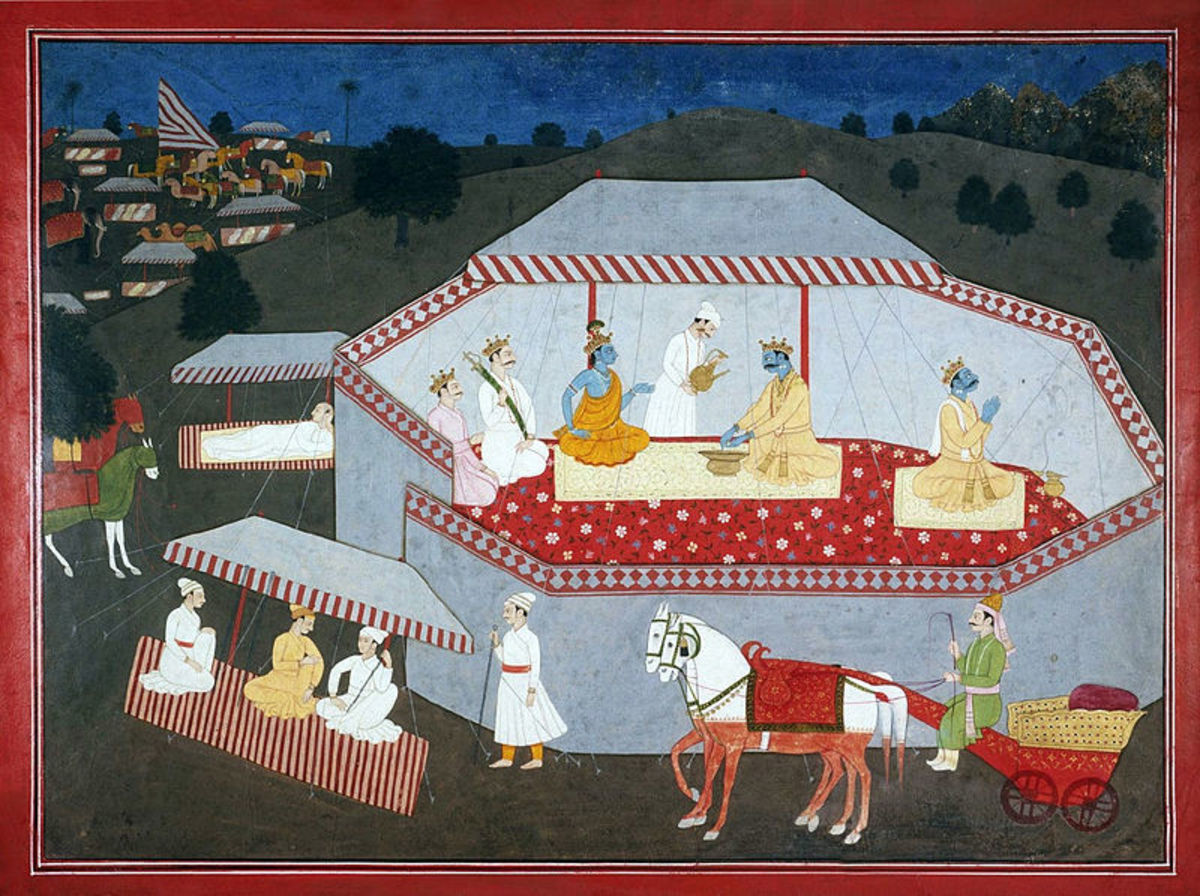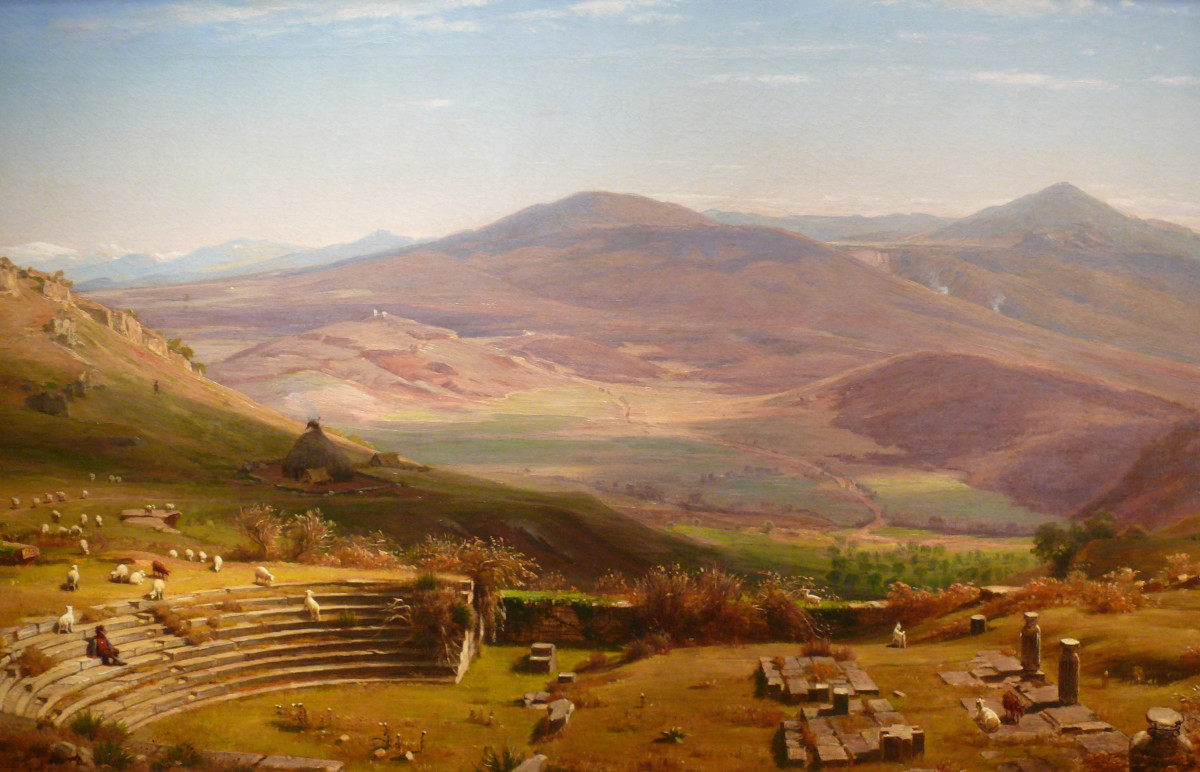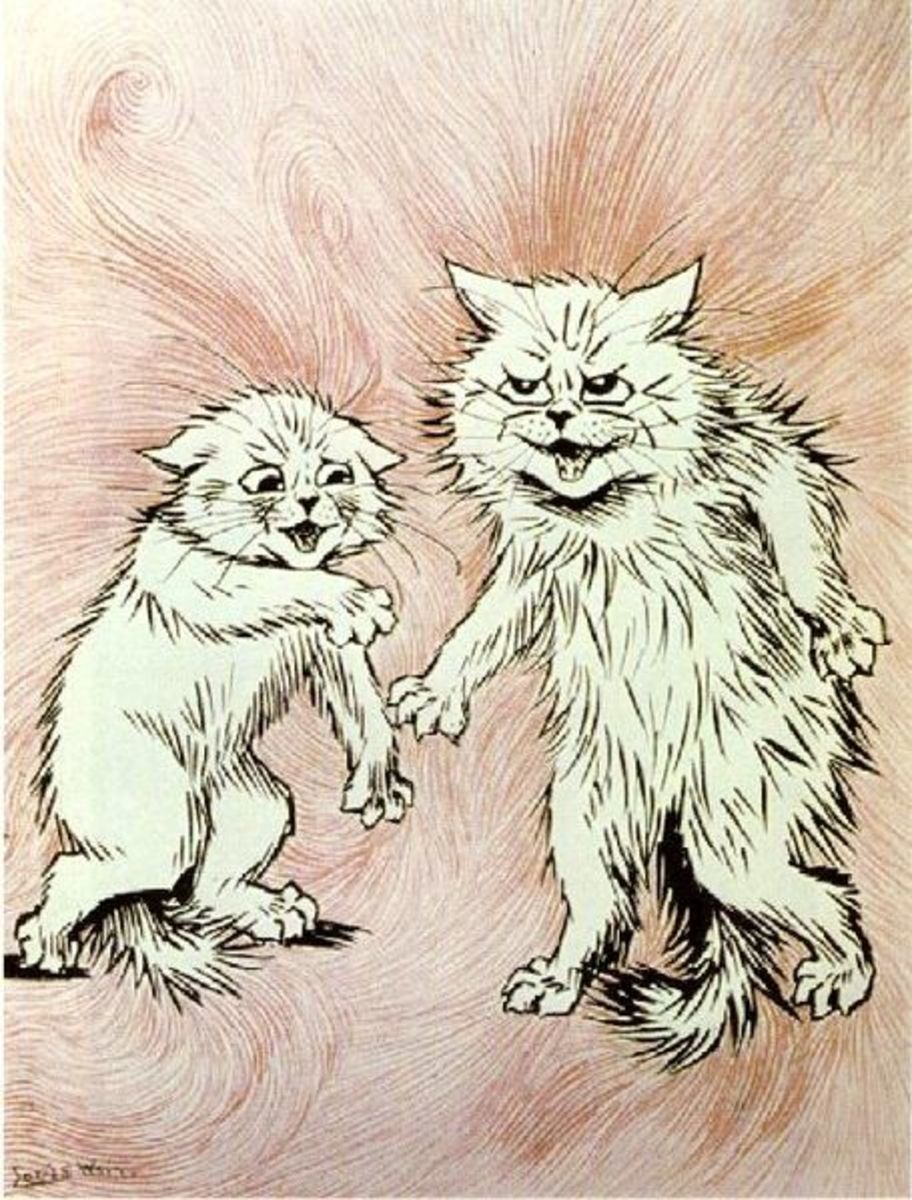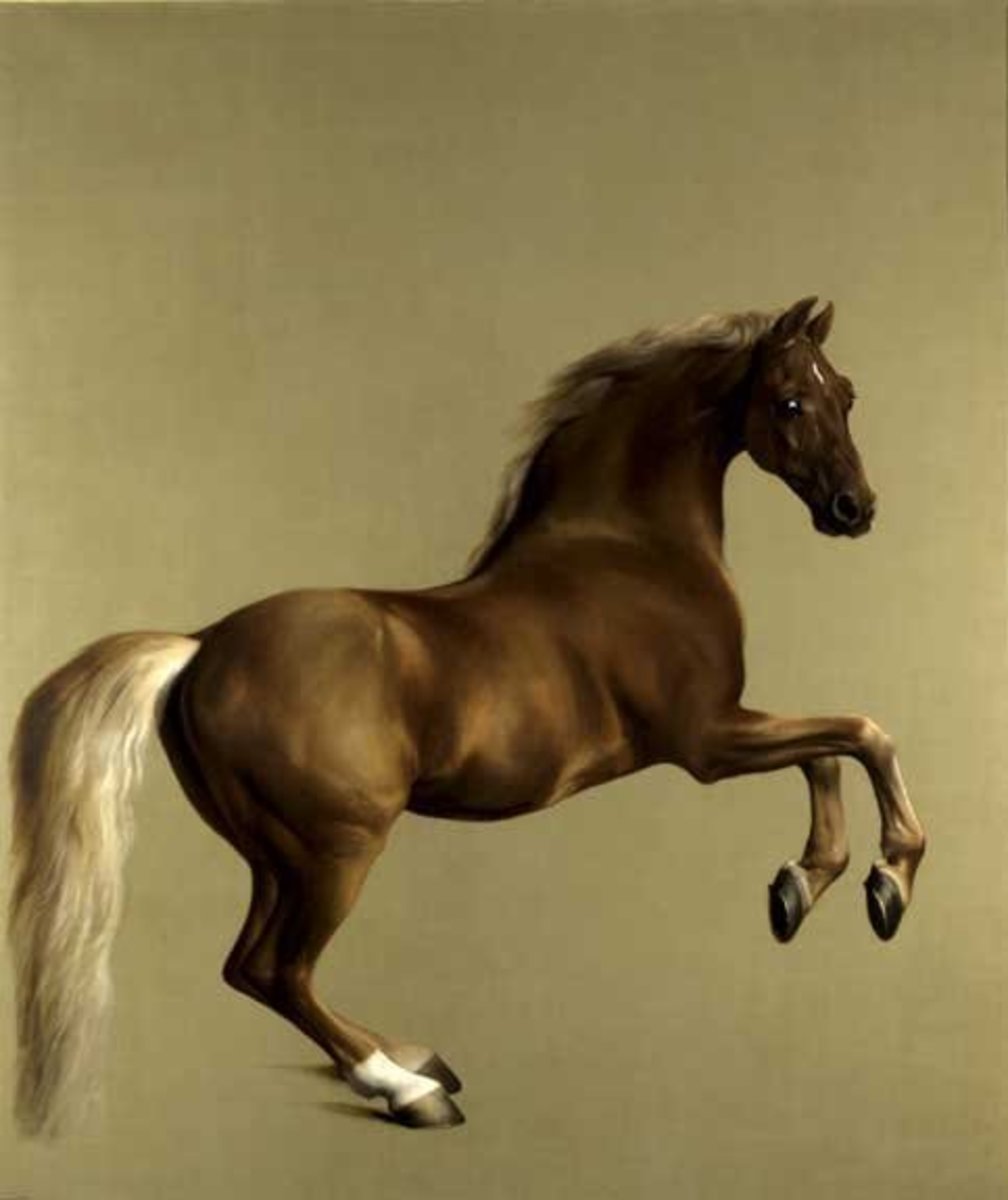The Birth of Impressionism
Freedom of Art
Today, artists enjoy great freedom of expression and are not restricted by rigid standards. They create, display and market their works freely. There is no entity to declare, "This is not art!" We live in a world where anything goes and the possibilities of artistic expression are endless. But, it wasn't always like this.
It wasn't until the of middle of the 1800's when a group of painters in France dared to paint with greater freedom of expression. The state sponsored Ecole des Beaux Arts and the Salon, established in 1667, had been imposing rigid standards of Neoclassicism for more than a century. Finally, Eugene Delacroix (1798-1863), Camille Corot (1796-1875), Edouard Manet (1832-83), Jean Francois Millet (1814-75), Gustave Courbet (1819-98), Camille Pissarro (1830-1903), Claude Monet (1840-1926), Alfred Sisley (1839-99), Edgar Degas (1834-1917), Berthe Morisot (1841-95), and Mary Cassatt (1845-1926) forged new frontiers of artistic expression. They developed less tedious painting methods, found new reasons to paint and became more original and self-expressive in their painting styles.
Previously, Neoclassic paintings were limited to historical, biblical or mythological themes to show the magnificence of human life. Paintings were expected to teach certain things, such as morals, honor, justice or patriotism. Compositions were constructed according to classical symmetry and balance. The Salon accepted only smooth, polished paintings, that were muted in color.
Producing a painting in the Neoclassic style involved many laborious procedures and tedious steps. First, the canvas was primed with dark paint. Then, the darks and lights of the overall composition were established. Next, the details of the picture were sketched in with sticks of charcoal. As the imagery emerged, a reddish brown sauce, known as an ebauche, was brushed into the dark areas. Thick white paint was then used to create highlights. After this step, translucent halftones of muted colors and earth tones were painted to produce values and shades. Opaque white paint was used to produce highlights and tints. This careful process of painting the highlights and shadows continued until the over-all painting appeared smooth and polished.
Generally, paintings worthy of Salon exhibition were those submitted by the well-established elite. Nevertheless, art students studied classical antiquity and diligently practiced their skills with dreams of fame and fortune. They spent years copying teacher-produced engravings of antique plaster casts and statues at the French state Art schools. After they were able to draw with great expertise, the students were finally allowed to paint. Exercises in painting included head and figure studies.
Facing rejection by the salon, Eugene Delacroix (1798-1863), submitted, "Arabs Skirmishing In the Mountains". This painting revealed a wide range of color and loose brushstrokes. Delacroix was influenced by Romanticism, a movement which had been gaining in popularity. He used swirling strokes of color to depict not only motion, but emotion. Some critics declared Romanticism unattractive, while others thought that Neoclassicism, in comparison, lacked passion. Romanticism was inciting a new controversy.
Eventually the Romantics won the controversy, paving the way for Joseph Turner (1775-1851) and his atmospheric effects. According to Camille Pissaro, however, "Turner and Constable had no understanding of the analysis of shadow, which in Turner's paintings is a mere absence of light."1 Impressionism officially gave birth when Monet, Renoir, Morisot, Sisley, Pissarro, Degas, and 34 others exhibited at the Salon des Refuses in 1874. Their works featured rough unfinished surfaces and this impressionistic style outraged the critics.
The "Impressionists," as they came to be known, varied in their individual approaches, but shared a common interest in naturalism, the effects of light and the beauty of life surrounding them. They had freed themselves from the confines of the studio and the laborious painting procedures of Neoclassicism. It was Corot who had advocated painting on location. He had urged fellow artists to record their first impressions after observing the effects of natural light.
Before this time, artists were tied to their paintings within studio walls for hours, breathing in the fumes of oil paints and turpentine, getting little exercise and taking months to produce a painting. Now, they created pictures by getting out of the studio and taking excursions to peaceful parks, woods and places of amusement or entertainment.
Current literary influences, such as Charles Baudelaire, a poet, and Emile Zola, an author, inspired artists to paint for new reasons. Baudelaire advocated painting the lives of the bourgeoisie to reveal the significance and importance of modern life, rather than historical. He declared that modern dress could be as interesting as Roman togas. He requested Edouard Manet to: " Make us see with brush or pencil how great and poetic we look in our cravats and our leather boots."2 His book titled, "The Painter of Modern Life" inspired Degas to paint behind the scenes of operas and ballets, and Monet to paint the billowing steam of the steam engines roaring through the Paris train stations. Other locations became subject matter for the other artists, (with the exception of Mary Cassaat and Berthe Morisot who remained inside their homes, since women would not paint on location.) These locations included racetracks, restaurants, parks, cafe concerts and busy streets.
The world around them was improving rapidly due to the technological advancements of the industrial revolution and the progress being promoted by Napoleon III. The industrial revolution caused the French citizens to have faith in themselves and they developed an attitude that anything was possible. Now, their streets were lit up by streetlights and their shops were stocked with ready made clothing and material, made possible by the power loom. The availability of cast iron and steel enabled the constructing of railroad stations, bridges, parks, boulevards and monuments. Technology also gave artists ready-made tubes of paint allowing them to undertake longer outdoor painting trips. More colors became available to purchase, as well. These changes enabled and inspired them to paint the busy city and the quiet countryside, sometimes in effort to capture it before it too was gobbled up.
Delacroix's notes revealed new theories concerning the use of color and he influenced the others. In 1666, Sir Issaac Newton split white light with a prism and showed that light consists of red orange, yellow, green, blue, indigo and violet. He identified the three primary colors, red, blue, yellow, from which the others are made. The writings of Eugene Chevreul also influenced the use of brighter colors. Chevreul's book, "On the law of Simultaneous Contrast of Colors" inspired the Impressionists to experiment with "taches" of color to manipulate the viewers eye in telling a more vivid story in paint. Complementary colors when placed next to each other, provided a vibrating effect. They discovered that colors did not have to be tediously worked or blended. Instead, they could be optically mixed using stokes of pure color. The use of a dark primer was abandoned in favor of a white primer, allowing the colors to be "lit up" on the lighter background.
Photography also influenced the Impressionists in many ways. Some of them owned cameras and they found new possibilities for picture making. Photography freed them from restrictions in composition, allowing informal balance to show action off-center or cropped abruptly. Degas studied animal figures in motion projected in motion picture machines which had recently been invented. This study helped him accurately depict the horses he loved to paint and sculpt. Monet discovered that moving figures in slow shutter speed were blurry, and utilized this phenomenon to show movement in his paintings. Flattened perspective, which was revealed in studying panoramic views of landscapes, also gave the Impressionists more choices in composition.
Nevertheless, between struggling to earn a living through producing art and fighting the establishment, some were on the verge of giving up. Cezanne was disappointed he had not been able to produce art worthy of museums. Renoir's Study for Les Grand Baigneuses (1883-1885), shows balanced compositions incorporating female nudes in sharp outline, perhaps to maintain academic acceptance.Thankfully, one art dealer in Paris, Durand-Ruel, since the 1870's, had been determinedly buying, selling and promoting their works in Europe and America. He began sending their paintings overseas to galleries in New York and Pittsburg. Eventually, it was American collectors, intrigued by the independent renegade quality, the lightness and joyfulness of Impressionism, who provided the fastest growing market. Finally in 1897, The Musee de Luxembourg featured 38 Impressionists paintings that had been donated to the French government by Gustave Caillebottte. In1900, the World Exposition included many Impressionists works. After being included in these large and important venues, many Impressionists were suddenly given the status and financial rewards they sought and knew they deserved.
However, according to Pissarro much confusion revolved around the truth of the style, history and mission of their group. He stressed in 1900, the importance of nature in art and denounced the commercial aspects. In letters to his son Lucien, he complained, "... Mr.Dewhurst understands nothing of the Impressionist movement...He says that before going to London in 1870 that Monet and I had no conception of light. The fact is we have studies which prove the contrary. He omits the influence which Claude Lorrain, Corot, the whole eighteenth century and Chardin especially exerted on us."3 In another letter dated 8/8/03, he complained of not selling anything at an exhibition in Berllin: "What do I get for all the trouble of sending my works...It is not worth the trouble and what is most provoking is to see what is actually bought... This does not supprise me; it is not easy to understand how to look at pictures. it will probably be the same in London, if not still worse, for they really don't care for anything in painting except a brilliant brush stroke."4 If only Pissarro knew how much his paintings sell for today... millions of dollars, Mr. Pissarro! But in all reality they are priceless. Perhaps this is why they were not sold on a larger scale while he was alive, for as he explained, "...money is an empty thing; let us earn some since we have to but without departing from our roles!" 5
Impressionism brought forth new possibilities for artists. Although a common impulse unified these artists, they developed diverse and unique styles. I believe, that modern artists who paint with the same spirit as Monet, Pissarro, Marisot and any of the early pioneers of Impressionism, no matter what style or manner they employ, will find joy of life.
1 Pissarro, Camille. Letters to His Son, Luciene. Boston: MFA Publications, 2002. 356
2 High Museum of Art. Impressionism: Paintings Collected by European Museums/ A Resource Packet for Educators. Atlanta: High Museum of Art, 1999. 9
3 Pissarro, Camille. Letters... 355
4 Pissarro, Camille. Letters... 356
5 Pissarro Camille. Letters... 356
6 Pissarro Camille. Letters,,, 341






